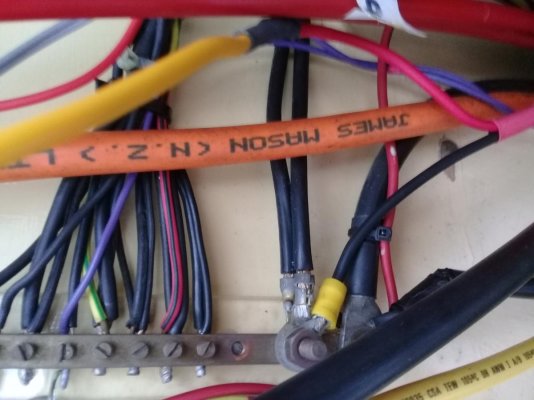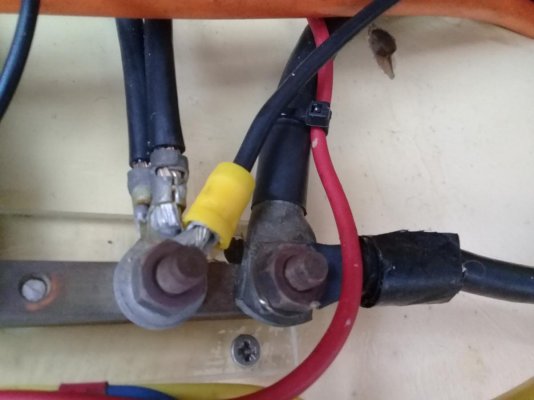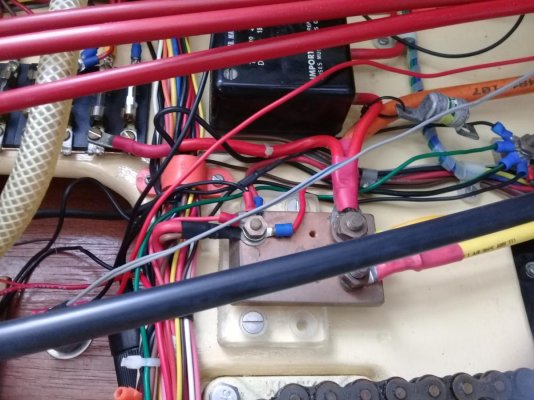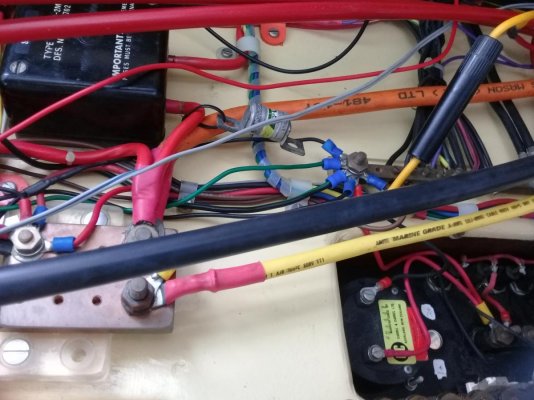Phil23
Senior Member
- Joined
- Jul 29, 2013
- Messages
- 207
- Location
- Russell NZ
- Vessel Name
- MV Unique
- Vessel Make
- Salthouse Coastal 35
I need to monitor Amp draw down and any leakage utalizing an amp meter and shunt how ever I am unsure where to mount the unit.
I have a 3 battery system through 2 isolation switches.
The positive lead from the batteries arrive at a positive terminal in the switch panel as does ships earth.
I appreciate the shunt is installed in parallel with the amp meter however unsure which line to mount the shunt into.
I have a 3 battery system through 2 isolation switches.
The positive lead from the batteries arrive at a positive terminal in the switch panel as does ships earth.
I appreciate the shunt is installed in parallel with the amp meter however unsure which line to mount the shunt into.





